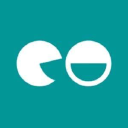Inventing An Anti-Theft Bag For Music Festival Goers
Hello! Who are you and what business did you start?
I’m Tom Worcester, founder of Lunchbox Packs, the first anti-theft festival hydration pack and the last festival bag you’ll ever need.
After conducting hundreds of interviews on a hunch that there was an underserved market, my team and I identified the top issues facing festival attendances - , theft (in the form of pickpockets), security bag restrictions, and time-consuming water lines. With these issues in mind, the Lunchbox was born.
To address theft, Lunchbox’s inward facing anti-theft zipper system is specialized to prevent against outside access & pickpockets. This means that the main access points are located against your back versus the standard outward facing zippers. The bag is also constructed out of a coated ballistic nylon, making it next to impossible for thieves to slice it open to steal its contents. Furthermore, Lunchbox’s EasyFill hydration method allows you to refill your bag 3 times faster than standard hydration packs. The bladder compartment is also fully insulated, keeping your water cooler for longer.
We founded Lunchbox in April of 2018 and

Download the report and join our email newsletter packed with business ideas and money-making opportunities, backed by real-life case studies.

Download the report and join our email newsletter packed with business ideas and money-making opportunities, backed by real-life case studies.

Download the report and join our email newsletter packed with business ideas and money-making opportunities, backed by real-life case studies.

Download the report and join our email newsletter packed with business ideas and money-making opportunities, backed by real-life case studies.

Download the report and join our email newsletter packed with business ideas and money-making opportunities, backed by real-life case studies.

Download the report and join our email newsletter packed with business ideas and money-making opportunities, backed by real-life case studies.

Download the report and join our email newsletter packed with business ideas and money-making opportunities, backed by real-life case studies.

Download the report and join our email newsletter packed with business ideas and money-making opportunities, backed by real-life case studies.






















